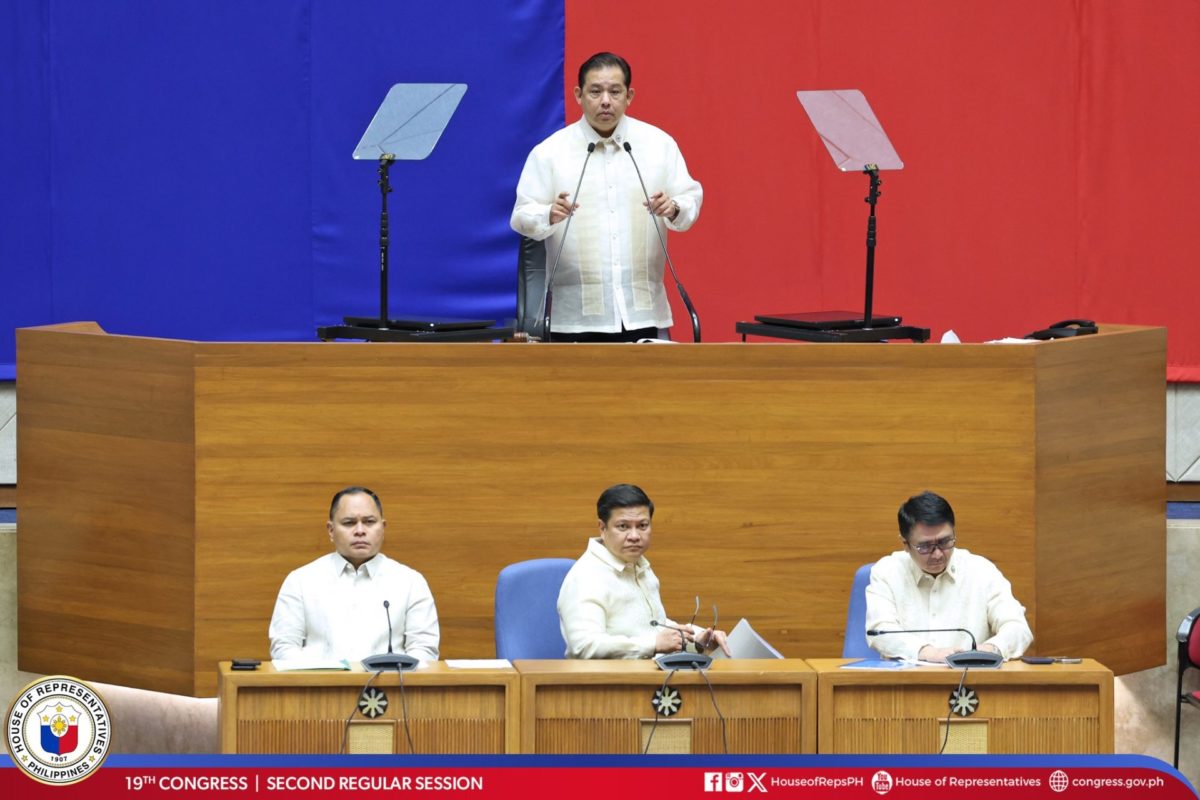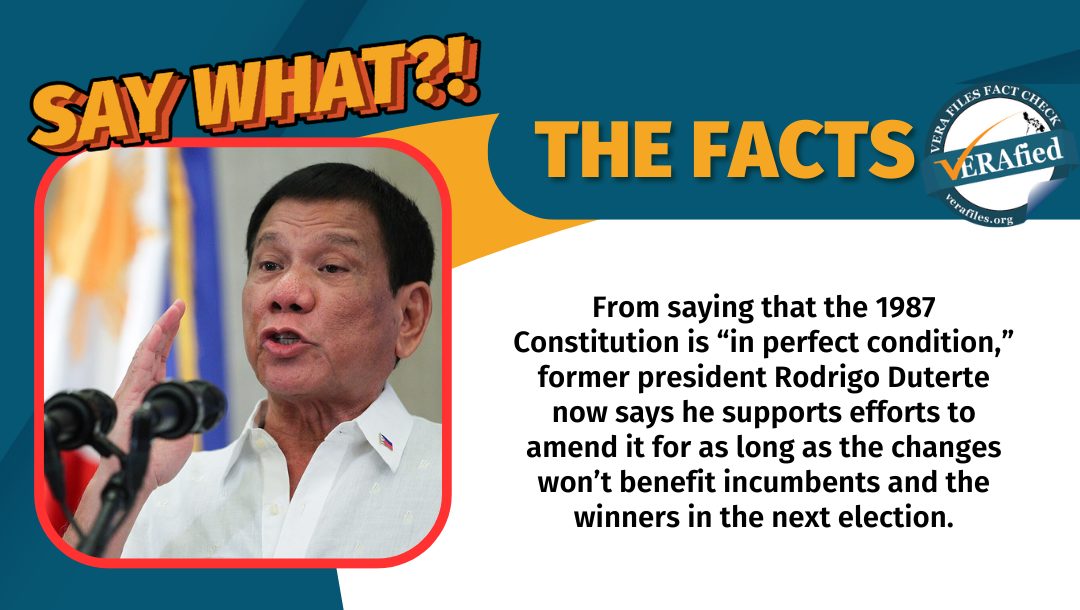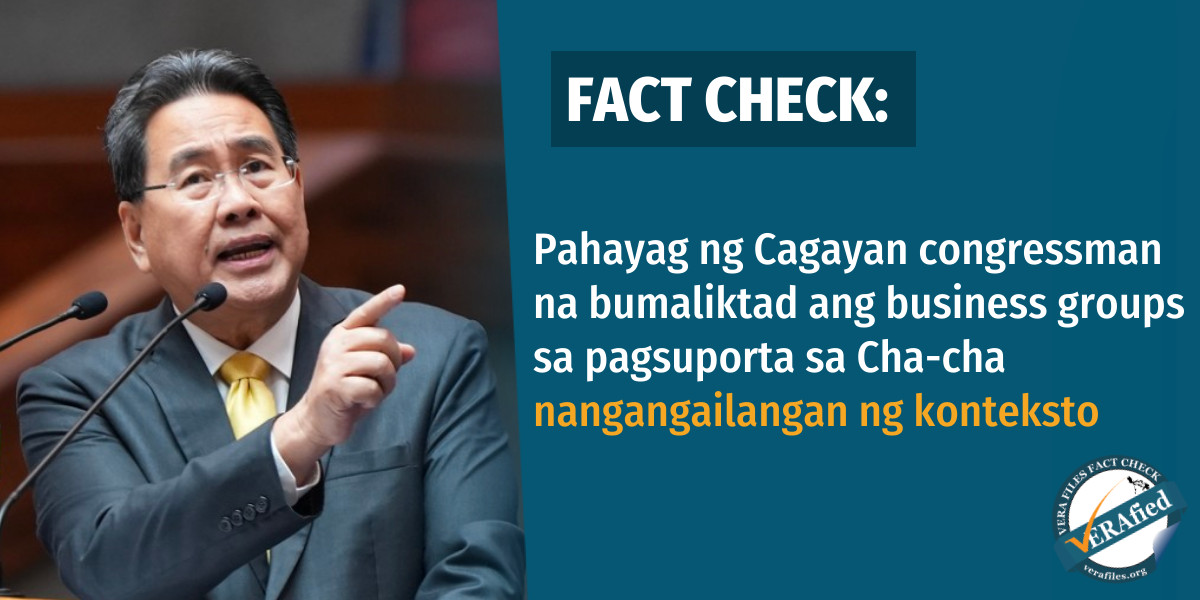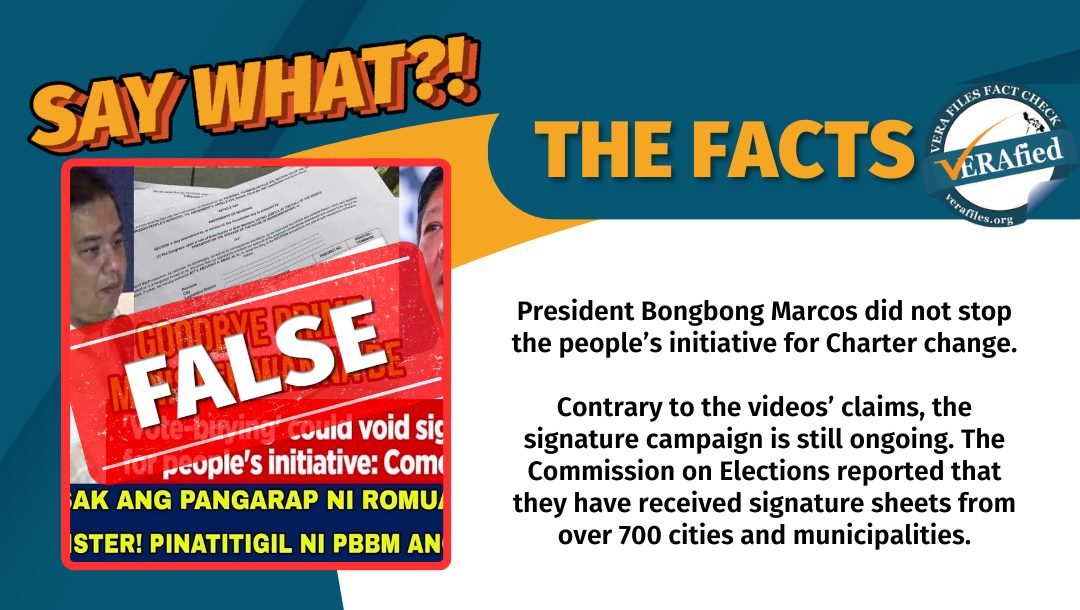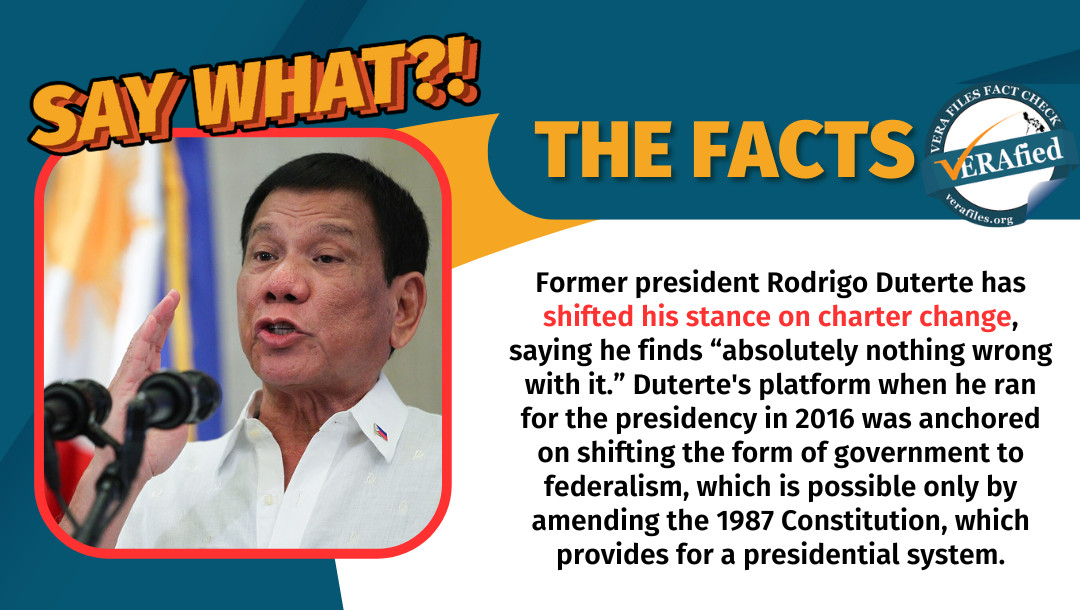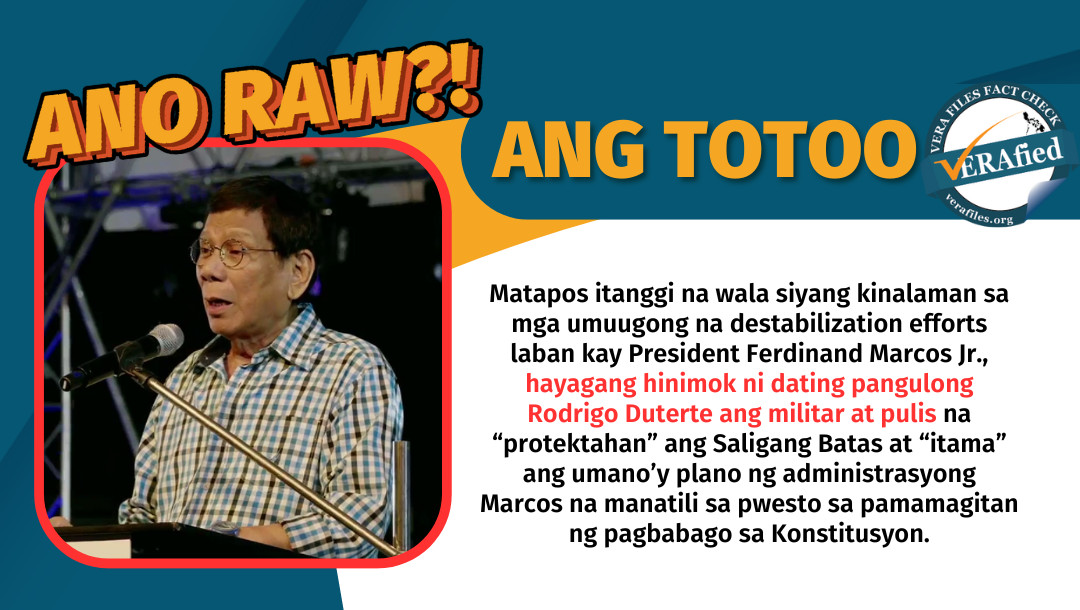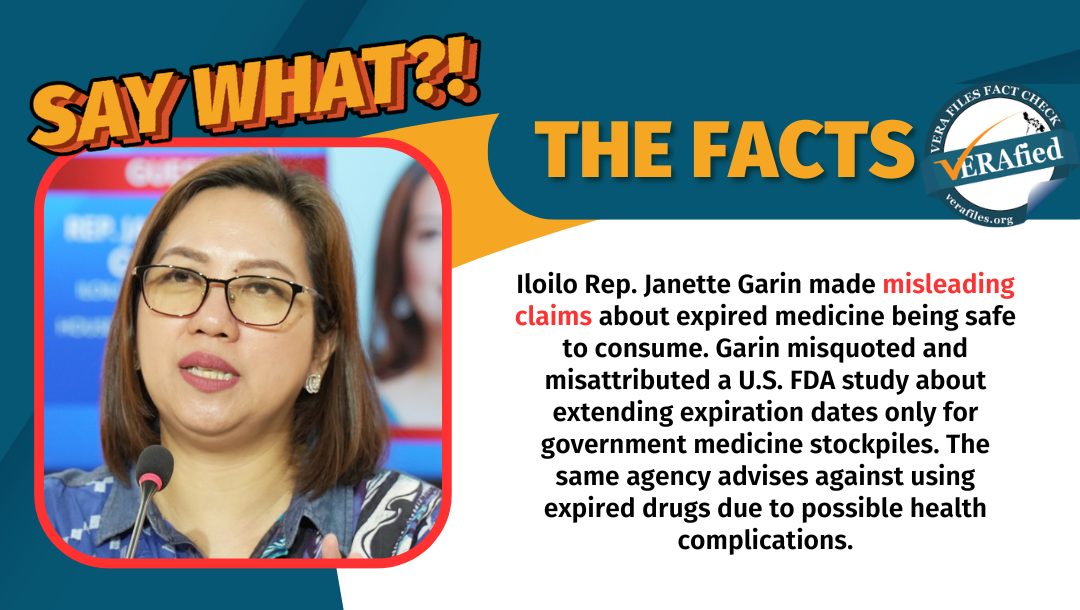Disregarding the directive of President Ferdinand Marcos Jr. for the Senate to “take the lead” in amending the economic provisions of the 1987 Constitution, the House of Representatives has fast-tracked the approval of Resolution of Both Houses (RBH) No. 7.
“If we have three-fourths vote on RBH No. 7, and everything has been complied with in accordance to the Constitution, then my suggestion is we forward it to the Commission on Elections [Comelec],” said House Majority Leader Manuel Jose “Mannix” Dalipe on March 19.
More than two months had passed since Marcos gave his instruction, the Senate’s RBH No. 6 is still being discussed at the subcommittee chaired by Sen. Juan Edgardo “Sonny” Angara.
Senate President Juan Miguel Zubiri said the resolution is “on track,” as he and Angara are convincing other senators “to make sure that [they] have the three-fourths vote” needed to pass the measure.
RBH Nos. 6 and 7 propose amendments by inserting the phrase “unless otherwise provided by law” to authorize Congress to pass enabling measures that would remove the 40% limit on the ownership of public utilities (Section 11, Article XII), basic educational institutions (Section 4, Article XIV) and advertising (Section 11, Article XVI).
Marcos earlier said the 1987 Constitution “was not written for a globalized world,” justifying the need for changes so that “we can increase economic activity” and “attract more foreign investors” in the country.
The present Constitution was conceived following the ouster in 1986 of Marcos’ father and namesake, the late dictator who stayed in power for 21 years.
Controversies associated with a House-backed gathering of signatures for a people’s initiative petition led to the current approach in introducing constitutional amendments, with the president intervening in a legislative process, asking the Senate to take the lead.
What is this “unprecedented” way of proposing Charter change? VERA Files Fact Check breaks down five questions on this issue:
-
How can the Constitution be amended?
Under Article XVII of the 1987 Constitution, there are three modes to amend or revise the charter: a constituent assembly with the Senate and the House of Representatives convening as one body, a constitutional convention with elected delegates and a people’s initiative.
| Mode | Requirement |
| Constituent Assembly | Senators and congressmen convene as one body to introduce amendments or revisions, which require a three-fourths vote of all members to pass |
| Constitutional Convention | a separate body composed of elected representatives, created for the sole purpose of amending or revising the Constitution |
| People’s Initiative | a petition signed by at least 12% of the total number of registered voters nationwide, with each legislative district represented by at least 3% of its registered voters |
On Jan. 29, the Comelec suspended the controversial signature campaign of the People’s Initiative for Modernization and Reform Action (PIRMA) to allow the poll body to review and amend its rules on the People’s Initiative (PI).
PIRMA was criticized for allegedly paying P100 for every signature it could get and promising financial assistance to citizens in exchange for their signatures. Noel Oñate, the group’s lead convenor, denied such claims.
In view of the 1997 Supreme Court decision that Republic Act No. 6735 or “The Initiative and Referendum Act” is “deficient and inadequate” to implement PI, Senate Minority Leader Aquilino “Koko” Pimentel III and opposition Rep. Edcel Lagman filed separate bills setting the rules for this mode of constitutional reform. Both are pending at the committee level.
-
Is there a “fourth mode” to amend the Constitution? What is the “Bernas method”?
None, but some members of the House have cited a formula raised by the late constitutionalist Fr. Joaquin Bernas SJ, who had raised a “fourth mode” for Charter change, with the two houses of Congress holding separate sessions and focusing on specific amendments.
Lawyer and constitutionalist Michael Yusingco, however, said this was only a suggestion on how to “operationalize” a constituent assembly.
In a 2012 column on Inquirer.net, Bernas explained that his proposal could work like a “legislative process:” Either house would draft a bill containing its proposed amendments. Once approved via a three-fourths vote, the measure is transmitted to the other chamber for its approval.
“Once a constitutional amendment bill is approved by both houses, it can be submitted for ratification by the people during the next national election,” he said.
The president would have “no role in the formulation of amendments,” Bernas added, and would only be involved in the budget provision for the plebiscite.
Since the Constitution does not outline the rules of procedure for a constituent assembly, Bernas said “the fundamental principle is that what is not prohibited by the Constitution, either explicitly or implicitly, is left to the discretion of Congress.”
Following this interpretation, Yusingco said RBH Nos. 6 and 7 are covered by the constituent powers of Congress.
As to the manner of voting on the amendments, Bernas wrote in a 2014 column that the two houses of Congress “might come together in joint session” for the purpose of proposing amendments or “do it the way they pass ordinary legislation.”
-
What are the controversies on RBH Nos. 6 and 7?
Former Supreme Court chief justice Reynato Puno said adopting such an interpretation to forward RBH Nos. 6 and 7 “will invite a serious constitutional challenge” because Bernas’ personal views were “never discussed” by the framers of the 1987 Constitution.
Puno pointed out that Article XVII, Section 1.1 is “anomalous” because in writing this provision, the framers assumed a unicameral legislature with only one chamber. He said the authors of the charter forgot to rewrite this article in such a way that it expressly states a bicameral system, where the House and Senate meet and vote separately.
“This is our first constitutional quandary: how to interpret this Article XVII, Section 1.1 in a manner that is aligned with the intent of the framers and in accord with the will of the people when they ratified the 1987 Constitution,” Puno said in a March 14 forum on charter change at the University of the Philippines (UP) Diliman.
In a 2023 position paper, the UP Political Science Department noted that in a constituent assembly, “voting jointly renders bicameralism and the principle of checks and balances irrelevant and meaningless.”
If Congress votes jointly, the Senate would be placed “in a disadvantaged position” since they are outnumbered by their counterparts in the House of Representatives.
Moreover, Yusingco said that the Bernas formula may only be “viable” if the proposed amendments are “simple and straightforward,” noting that the current resolutions tackle “complex and controversial” proposals.
There is fear that lawmakers would later recommend constitutional changes “that will suit their intent,” he pointed out.
“But if they’re able to just limit themselves to the three amendment proposals until the end, I would take that as a good thing – that they can discipline themselves when it comes to exercising their constituent power,” Yusingco said.
-
How can these issues be resolved?
Puno said the interpretation of Article XVII, Section 1.1 can be “submitted to the people for their judgment” in a referendum or Congress can act as a constituent assembly to repeal this provision.
“This can be brought for interpretation by the Supreme Court,” he added, saying that the judiciary can determine whether or not there has been “a grave abuse of discretion amounting to lack or excess of jurisdiction” on any branch of the government, including Congress.
Yusingco, however, said that if the High Court makes the decision, it may “not be good for constitutional reform” which should be a process where people can openly engage and exchange ideas.
He then urged both chambers to “press pause” on the resolutions and first agree on the rules of procedures for a constituent assembly.
In the absence of a consensus on how to proceed with this mode of charter change, both experts said any discussion on the “restrictive economic provisions” are preemptive.
-
Why does it matter? What’s next?
If RBH Nos. 6 and 7 are approved by Congress, it will have to be ratified in a plebiscite, where Filipinos will vote yes or no on the proposed amendments.
“Kapag ito ay naaprubahan ng mayorya ng Filipino sa pamamagitan ng plebisito, [the House] and [the] Senate will now take it one by one, providing a stepping stone… pag-uusapan natin ang edukasyon, [p]ublic utilities, [l]ogistics, [t]ransport sector,” Rep. Janette Garin, who is among the co-authors of RBH No. 7, said in a March 19 press conference.
Deputy Speaker David “Jay-jay” Suarez, also one of the charter change proponents, said, “It is important for us to work with the Senate on this so that we can limit the possible constitutional challenge RBH Nos. 6 and 7 will face.”
Suarez stressed that the anticipated challenges to the process and substance of the RBH could determine the “fastest route” to get it to the Comelec and “have the plebiscite in the soonest possible time.”
Comelec Chairman George Garcia said the questions in a plebiscite for charter change need to be submitted by Dec. 15 this year to be included in the ballots for the 2025 midterm elections.
